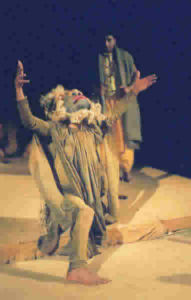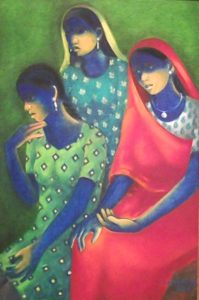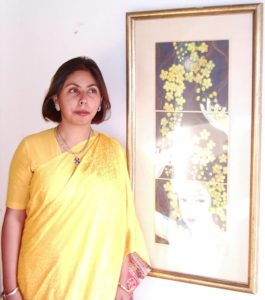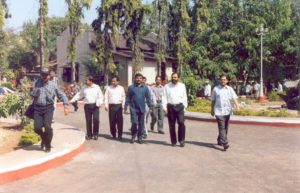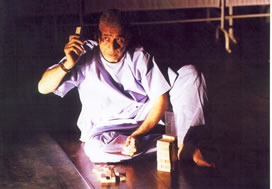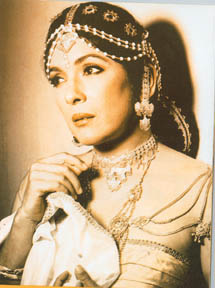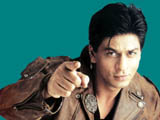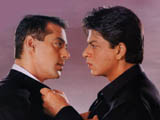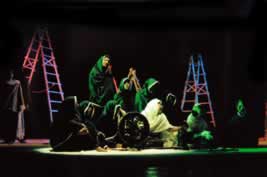Remembering Safdar Hashmi
Remembering Safdar Hashmi
–Manohar Khushalani
Having been associated with Street Theatre from late seventies my memories of Jan Natya Manch are equally old. It was way back in 1977 that I first met Safdar Hashmi. Our group, Workshop Theatre, which was formed after a workshop with Badal Sircar was rehearsing for William Hinton’s, Fanshen, a play about revolution in a village in China. Safdar had come to meet the late Sudhanshu Mishra. He sat through our rehearsal and gave many suggestions. Our group contained people, most of whom later migrated to Television – Sudhir Mishra, Sushmita Mukherjee, Bina Pal, Anil Mehta. Only Anamika Haksar and I stuck on wholely to theatre. Sushmita Mukherjee occasionally indulges in theatre but is largely involved in Films and Television. But the two years that we did street theatre were full of intensity. Our most memorable production was Badal Sircar’s Bhooma, for which Badal Da himself came specially to Delhi to do a workshop with us. Often people wept in our shows, and so did we, shamelessly, while performing. Although I was also performing in the Proscenium Arch, this liberty one could only take in a street play. When we came in touch with M.K. Raina, most of Workshop Theatre members opted to work in his Street Production of Juloos and later in Spartacus & Mother.
Our first test of our beliefs came when Raina took our performance of Mother to the Brecht International Festival held in Calcutta in 1978. There we were greeted by the biggest floods in the last 100 years of the city. While our street plays dealt with the underdog and deprived sections of society we were confronted with a dilemma. The floods created a pool of neck deep water around the Dharamshala that we stayed in. The water remained for three days and we were holed up on the first floor at the same time that the pavement dwellers were living all around the Dharamshala with their aluminum utensils floating before their eyes . We were helpless – unable to offer them refuge in our own rooms. What kind of street theatre were we doing? We often debated on whether doing plays was enough and whether it should not be supplemented with social work. The answers came much later when Maya Rao, Anuradha Kapoor and myself met by chance at SRC and decided to form Theater Union. Later we co-opted fellow Prayog members like Vinod Dua , Ein Lal and Ragini Prakash, along with women activists like Urvashi Butalia and Sudesh Sehgal.
Our first play was prepared in association with several women’s groups. It was called Balatkar Kanoon . The Rape Bill was before a Select Committee, whose recommendation would be considered before it became an Act. We examined the bill, discovered the lacunae as well as the strengths. We created a play which would warn the select committee about the loop holes while educating the common women about their rights as per the Bill. During this play we had an opportunity to interact with social workers who worked in the very communities that we performed in. Needless to say this gave us more satisfaction. Much later TU prepared a play on Multinational Drug Companies who were dumping in the Third World, all those drugs which were banned in the Developed World. This play we prepared in association with Voluntary Health Association of India and got lot of information from Mira Shiva. This information we used to create an educative play in a comic vein. This play too was a useful supplement for medical workers. We also did our bit by distributing printed literature at the end of the show. However, by now the debate on whether a street theatre group should also do social work had resolved itself. It had now dawned on us that we were performers and we should stick to that. If we created a consciousness in just a few people it would spread to others by conduction.
Some times people had created doubts amongst us about the reach of street theatre. Television was cited as a medium with a greater reach. One still remembers a talk that Safdar Hashmi gave at the Jawahar Lal Nehru University City Auditorium which was so prophetic. At that time few people owned TVs. There was only one Doordarshan channel and no private channels. Hashmi warned that TV will create antisocial vibes. While performing arts are a community affairs and bring many people under one roof the television will devided people by restricting them to their homes. He cited the example of people who visit homes of Television owners. Often the host spoke to his guest by using his ear as his mouth. Since his mouth was turned away as he himself had his eyes glued to Television. Ofcourse he saw a deliberate conspiracy in this and felt that television had been created to divide people, to break up communities and to destroy the collective spirit. So inspired was I by what he said that I went up to the stage to congratulate him.
But the real truth about TV having a greater reach has been resolved in my mind by history. The answer lies in credibility. A human being looking into your eyes and delivering a messages has greater credibility than an electronic media supported by vested interests and money power. When we did the play against Bride burning, just 200 shows were enough to create Media & Government attention on the issue. Soon the issue was seen everywhere in newspapers on television in and in films. Mera Devan’s award winning film on Bride Burning, used our play’s sound track interspersed with her own visuals. Theatre Union performed shoulder to shoulder with Jan Natya Manch at many venues. There we got to see each others plays – appreciate and criticise each others work. While Safdar appreciated the choreography and aesthetics of TU productions, he felt that the message was not direct. We felt that Janam plays were hard hitting but some times (not always) there was a poster effect. Though I must say Janam productions have been changing over the years and the last play that I saw looked like a Theatre Union play to me. Since TU had performers who also acted on the proscenium stage our productions were bound to be different. However this I am talking about the eighties. Now Janam has also performed on stage – it is alive and kicking while Theatre Union has gone into hibernation.
I still remember how it was considered a taboo for a street theatre worker to perform on stage. The first time I remember Safdar showing an interest about problems of Proscenium theatre was when the Bombay police act was introduced in Delhi and theatre workers were up in arms against it. Said Hashmi in a seminar specially organised against it; “this was the first step towards government censorship of theatre”. I was particularly agitated about it since I felt that police was ill equipped to understand the nuances of theatre. Little did I realise at that time, that in effect, given the usually inefficiency of the official machinery, getting a police license, irritating though it may be, was just another formality to be completed. Also, street theatre, which had the maximum potential of a political irritant was outside the purview of a performance license since these performance were not in an auditorium. Yet Hashmi spoke most ardently followed by M.K. Raina who had a foot in both the boats.
Street theatre does not mean just taking up any issue , assembling a bunch of enthusiasts, and converging the first street corner one comes across. It may take months to write a nukkad natak script. Workshop Theatre took three months to translate Badal Sircar’s Bhooma and six months to further evolve the play! An issue may arise from a slum. It may be wife beating, or a drunkard husband, or a middle class dowry problem. It is chosen, by a general consensus, workshop sessions are organised and a script is evolved keeping in mind the target audience. Few people know that Badal Sircar’sJuloos has been performed in Pakistan as well. Street theatre has attracted a few people because of the romanticism involved in the whole exercise. Since they are often exposed, the police which never, likes references to its own brutalities, often tries to stop the performances. Sometimes even the audience gets pulled up because of the personal, one to one relation ship that this medium tries to establish. When the police tried to stop a performance of Juloos by Prayog at Connaught Place’s central park, more than a decade ago, the audience intervened on behalf of the performers and battled with the police. Similarly, during the Emergency, when the police stopped a street performance at Curzon Park, Calcutta, the common people responded by turning up in thousands to watch the same performance the next day. The romanticism, however, wears off after some time. Only a few who are genuinely committed stick to the movement. “If ever you do street theatre, forget that you will be happy, forget that you will be famous, forget that you will be rich,” warns Badal Sircar. However, Safdar Hashmi’s unfortunate martyrdom has changed all that. “people have become more conscious of a performer’s right to perform. But Street Theatre which appeared to be on the decline is bound to rise up again and fight the menaces of social evils. Be it with plays like Janam’s unforgettable Aurat or Theatre Union’s similarly memorable Toba Tek Singh.
